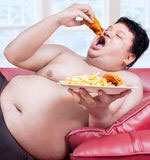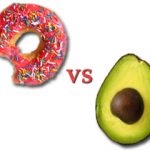- Like
- SHARE
- Digg
- Del
- Tumblr
- VKontakte
- Flattr
- Buffer
- Love This
- Save
- Odnoklassniki
- Meneame
- Blogger
- Amazon
- Yahoo Mail
- Gmail
- AOL
- Newsvine
- HackerNews
- Evernote
- MySpace
- Mail.ru
- Viadeo
- Line
- Comments
- Yummly
- SMS
- Viber
- Telegram
- JOIN
- Skype
- Facebook Messenger
- Kakao
- LiveJournal
- Yammer
- Edgar
- Fintel
- Mix
- Instapaper
- Copy Link
What is an Elimination Diet?
It has been estimated that over 75% of the population suffers from food allergies, although nearly everyone experiences similar effects of food intolerance at least one time in their life. In many instances it is not necessarily intolerance to the food itself, rather intolerance to an additive in the food.
Your health, performance and physique are all dependent on how your digestive system works and understanding which foods cause you the most grief is the first step to a happy healthy life.
Working with a personal trainer can be beneficial in developing an exercise regimen to develop a healthier lifestyle. However, even a weight loss diet can only go so far if you suffer from intolerance to certain foods.
Different foods contain different ingredients and the body handles most of them fairly well. However, if your system lacks certain enzymes it will be unable to break down the food resulting in symptoms that may be confused with a food allergy. Before you begin any type of self-directed attempts to determine what foods you may not be able to tolerate, you will want to check with a dietician to ensure you receive appropriate nutrition, especially if you are going to embark on an elimination diet.
If you have a food allergy, chances are you are already aware of it. A food allergy is a response of your immune system where food intolerance is a response from your digestive system. While the symptoms of a food allergy can go from mild to extreme, they can include:
- Nausea
- Stomach pain
- Diarrhea
- Shortness of breath
- Swelling of airway
- Anaphylaxis
 Symptoms of intolerance to foods will also have the symptoms of nausea, stomach pain and diarrhea and may also include vomiting, heartburn, headaches and nervousness. Another issue with some food intolerance is how much you consume at one time may result in different levels of the symptoms. Your digestive track requires a good balance to work properly and certain foods can cause inflammation, effect permeability of the intestines and detoxification problems.
Symptoms of intolerance to foods will also have the symptoms of nausea, stomach pain and diarrhea and may also include vomiting, heartburn, headaches and nervousness. Another issue with some food intolerance is how much you consume at one time may result in different levels of the symptoms. Your digestive track requires a good balance to work properly and certain foods can cause inflammation, effect permeability of the intestines and detoxification problems.
Think you have in intolerance to certain foods? The sure way to find out is by going on an elimination diet. As previously stated, you will want the guidance of a nutritionist to ensure you receive proper nutrition while you go through the trial and error method of finding out which foods are not working with your digestive track. Personal training will also be beneficial when going through the elimination diet to ensure you receive an appropriate workout to match the adjustment to your food intake.
If symptoms resolve after removal of a food in the diet and with reintroduction they appear again, this can show that a food allergy/intolerance may be suspect. It will also help you realize what a large selection of foods you have, as in today’s world so many of us are limiting ourselves to the same foods, recipes and meals each day.
What you will need are a journal in which to record diet and changes you made as well as the dedication to see this process through to its end, usually between three and six weeks. If you suspect any particular food as being the cause of your intolerance symptoms, stop eating them and write them down in your journal.
Probably the best starting point is to get rid of all foods that contain gluten, soy, eggs, corn, beef, chicken, pork, nuts, legumes, citrus fruit and nightshade vegetables. See why you needed to talk with a nutritionist? The following chart demonstrates that while you may be eliminating a lot of foods, there are still plenty more you can eat while conducting your test.
| Include: | Exclude: | |
| Meats | Turkey, Lamb, Fish, Wild Meats | Beef, chicken, pork, bacon, canned meat, shellfish, sausage, cold cuts |
| Vegetables | All other fresh vegetables other than from excluded list, including rice | Tomatoes, potatoes and eggplant, wheat, corn, spelt, oats, rye and gluten containing foods. |
| Fruits | All other fresh fruit other than from excluded list | Citrus fruits, e.g. Orange and lemon |
| Legumes | Soybeans, soymilk, tofu, peas, lentils, all beans | |
| Nuts/Seeds | All seeds and nuts | |
| Dairy | Unsweetened rice, almond and coconut milk | Milk, cheese, yoghurt, ice cream, eggs |
| Fats | Olive, flaxseed and coconut oil | Butter, mayonnaise, processed and hydrogenated oils, margarine. |
| Beverages | Water, herbal teas | Alcohol, soft drinks and caffeine e.g. coffee and green tea |
| Spices/Condiments | Sea salt, pepper, fresh herbs | Chocolate, tomato sauce, mustard, BBQ sauce, vinegar. |
| Sweeteners | Sugar, honey, maple syrup, corn syrup, desserts |
After a day or two, your symptoms should be gone. If not, then there is something you’re not leaving out. Once the symptoms are gone you can start reintroducing some of these foods back into your diet. Pull out your journal and then decide which of the foods you eliminated you want to bring back into your diet. Begin with one item only and wait a couple of days. If you have no symptoms, eat some more and wait another day or to. After a few days if you have no symptoms, you can bring them back into your diet on a regular basis.
You can then add another of the eliminated foods and judge your reaction to it being reintroduced into your system. Continue as in the first reintroduction, and if you experience no symptoms after a couple of days, go ahead to the third food. Continue on in this manner until you rule out each food, on a one-by-one basis. Keep in mind that tolerance to certain foods may be due to your bio signature.
If you experience any intolerance symptoms, as listed below, stop eating that food, noting in your journal the type of symptom and its severity.
Fatigue Joint pain Skin
Headaches Bloating Brain
Insomnia Weight fluctuation Abdominal
Constipation Diarrhea Flatulence
Indigestion Drowsiness Stomach
Food cravings Mouth ulcers Mineral
Muscular aches Concentration Difficulty
Poor memory Sleeplessness Cough
Itchy nose Ear infections Sneezing
Sore throat Athlete’s foot Eczema
Fungal skin infection Jock itch Psoriasis
Rashes Pain Fog
Breakouts Cramping Deficiency
Typically, with a food allergy any amount you eat will cause symptoms but with food intolerance you may not experience the symptoms with a small amount. For example, if you have intolerance to dairy products you may be able to tolerate milk in your coffee or on your cereal. Drinking a glass of milk may exacerbate your symptoms of intolerance.
Each person’s metabolism is different as is their tolerance for certain food. While there is no guaranteed method of identifying and eliminating foods you can’t tolerate, working with a dietician or health practitioner on an elimination diet, can be a great tool to find out what works for your body and for you.



